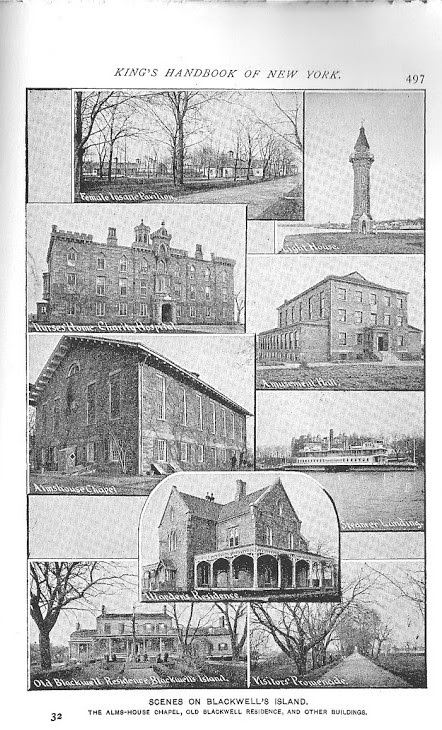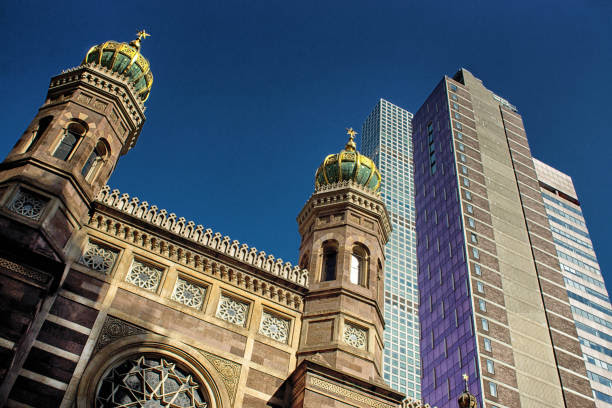Monday, May 17, 2021 – From a wonderful home for sick children to an abandoned shell


MONDAY, MAY 17, 2021
THE
365th EDITION
FROM THE ARCHIVES
A Tuberculosis Hospital for
Kids on Coney Island
to a Sad Future

In the early 1900s, not every child who visited Coney Island was having a blast on the rides and in the ocean.
That’s because Coney was home to the Sea Breeze Hospital, an institution for poor children (and some of their moms) who had contracted tuberculosis in the tenement neighborhoods of the city.

Sea Breeze Hospital, Coney Island (Library of Congress)
Tuberculosis is rare in New York now, and usually curable. But 100 years ago it was more common and deadly—and thought to be cured or at least eased by fresh, salty sea air.
Which is why Coney Island made the perfect place to build the hospital, equipped with its own school and partly funded by John D. Rockefeller. A New York Times article from 1905 reports:
“Yesterday afternoon at Sea Breeze the boys were playing at building terrible forts of sand, while their sisters sat in the sunshine to rock their ragged dolls to sleep. They were so healthy looking that no one would have dreamed they even had tuberculosis.”

THE ABANDONED TUBERCULOSIS HOSPITAL IN ROCKAWAY, QUEENS
FROM UNTAPPED NEW YORK

Looming over the beach in Rockaway, Queens adjacent to Jacob Riis Park is the abandoned Neponsit Beach Hospital also known as the Neponsit Children’s Hospital. The hospital once served as a tuberculosis sanatorium and operated from 1915 to 1955, and the main building was designed by the notable architectural firm McKim, Mead and White. Neponsit Beach Hospital mostly operated on children, but by World War II, the hospital began to treat military veterans until the hospital’s closure. The hospital was later converted into a Home for the Aged, a city-run nursing home that closed in 1998.

Around the start of the 1900s, the journalist Jacob Riis advocated for the creation of a children’s tuberculosis hospital in the Rockaways to take pressure off of the more prominent tuberculosis treatment centers in the city. Riis, a leader of the muckraking movement, chronicled the horrifying condition of New York’s tenements in his book How the Other Half Lives. After publishing his findings, Riis worked with the Association for Improving the Condition of the Poor and New York City Mayor George B. McClellan, Jr. to create a hospital on the beach away from the hustle and bustle of the city.
“Riis soon became an influential spokesperson to lobby for the establishment of many of the city’s parks and playgrounds, providing a haven from the stagnant air and cramped lifestyle so commonly found within the city limits,” writes Opacity. The park and hospital began development starting in 1907, but efforts were suspended until 1909 due to the disastrous Panic of 1907, when the New York Stock Exchange fell nearly 50% from the previous year’s peak. Before being transferred to the city, the hospital was built by the Association for Improving the Condition of the Poor with support by the Neponsit Realty Company and private sources.
In order to raise the $250,000 needed for the hospital’s construction, the Association distributed pictures of “Smiling Joe,” a boy suffering from spinal tuberculosis at the nearby Sea Breeze Hospital in Coney Island. The boy appeared in Association letters, newspapers, and magazines, and Theodore Roosevelt and John D. Rockefeller paid visits to “Smiling Joe.” After seeing the boy, Rockefeller contributed $125,000 to the project.
“Joe, although he suffered with spinal trouble and had to lie strapped to an iron frame, had a most cheerful smile. The doctor took his picture and sent it broadcast throughout the country, with an account of the work. Money came in with every mail, from East and West, North and South,” wrote the New York Times.

The newly opened hospital replaced Sea Breeze Hospital, as almost fifty children were transferred to Neponsit Hospital followed by children from other city hospitals, tenements, and orphanages. The main building was designed by McKim, Mead & White in a “U” shape with a capacity of 122 patients. Facing the beach were porches and open-aired balconies facing the beach so that patients could momentarily escape their painful reality.
“They become sun worshipers these little ones, who have come a long way from dreary, harassed homes that could not provide them with the proper nutrition and care; from the deadening institutionalized atmosphere of orphan asylums, from charity wards and from crowded fire escape ‘sun parlors’ perched over harrow, foul streets. In their two-wheel carts and chairs, or on crutches, or just dragging one foot after the other, slowly but without fuss, they come to the big open piazzas fronting on the beach or down to the sand for sun baths,” describes a 1930 article from the Brooklyn Eagle.

For the next two decades, the hospital treated hundreds of young tuberculosis patients, giving them opportunities to bathe in the ocean and travel outside with supervision. In 1929, city hospitals commissioner Dr. William Schroeder, Jr. announced an expansion for the hospital that would double the hospital’s capacity. The hospital soon became a project of the New Deal agency WPA, or Works Progress Administration, which employed millions of job-seekers to carry out public works projects. The Board of Estimate appropriated $300,000 for the building’s expansion, and a power plant and a nurses’ residences were soon after completed in 1939 and 1941 respectively. Two sets of murals for the hospital were commissioned by the WPA in 1938, included a set of 11 circus-inspired murals by Louis Schanker and 23 panels depicting children playing games by Helen West Heller. The WPA also created gardens around the hospital and added a sea wall.

Louis Schanker at the presentation of his W.P.A. mural at the Neponsit Beach Children’s Hospital in Queens in 1939.
Andrew Herman

For the next three decades, the nursing home cared for elderly patients, mostly with Alzheimer’s. Efforts to move HIV/AIDS patients to wings of the Neponsit Home for the Aged in the 1980s failed due to high risk of disease transmission.
Yet in 1998, the renamed Neponsit Health Care Center abruptly emptied the center of 282 elderly patients in the middle of the night. As a result of a Labor Day storm, the building suffered major damage to the point that city officials thought the building would collapse. As a result of this sudden move, two patients died. A report by the federal government concluded that the evacuation was unnecessary and that health officials not only endangered patients’ lives but also lied to them about a speedy return to Neponsit.
THE ROOSEVELT ISLAND CONNECTION
Under the direction of Mayor Giuliani ,busloads of Neponsit residents were delivered to many City Hospitals, unannounced with all their possessions in black garbage bags. Thirty souls appeared at Goldwater Hospital and it was later made their home. This disgusting act by Giuliani administration was fought and the dislocated Neposit residents won a lawsuit against the City of New York.
From Facebook:
October 28, 1999 – With the sudden closing, there were rumors that Giuliani wanted to sell the land to a political ally and friend, to turn the facility into an oceanfront hotel. The plan was tripped up because the deed to the land requires it to be used as a health care facility or a park. With the residents removed and the hotel plans thwarted, the City made plans to clear the property and turn it into park land. A Legal Aid attorney, however, got a court-ordered injunction in October 1999 which prevented the city from tearing down the buildings. (Source: http://www.rockawave.com/news/2014-03-07/Front_Page/Neponsit_Money_Pit.html) Justice David Goldstein ruled in favor of the New York City Council’s motion for summary judgement and declared that: (1) HHC’s surrender of the use and occupancy of the facility required the approval of the Council; (2) the Council has the right to determine the use of the facility (hospital, park or other public purpose); and (3) the Council has the right to contest the demolition of the facility by an unsafe building hearing. (Sources: http://rockawave.our-hometown.com/news/2000-09-16/Front_Page/Neponsit_Home0916.html?print=1; Text of judgement online: https://www.nycourts.gov/library/queens/decisions/council.htm)

Due to deed restrictions that allow only a hospital or public park, little redevelopment of the site has occurred. The Neponsit Adult Day Health Care relocated to nearby Rockaway Park in 2004, but the facility still remains abandoned despite numerous efforts to develop luxury homes on the property to the dismay of local residents. A security guard booth remains in operation, even in coronavirus times along the entrance on Rockaway Beach Boulevard.
FINAL OPPORTUNITY TO REGISTER FOR TUESDAY’S PROGRAM

TO REGISTER FOR THIS PROGRAM:
https://www.nypl.org/events/programs/2021/05/18/saving-americas-cities
MONDAY PHOTO
Send your entry to ROOSEVELTISLANDHISTORY@GMAIL.COM
RESPONSES WILL BE PUBLISHED WEDNESDAY

WEEKEND PHOTO
CENTRAL SYNAGOGUE
NINA LUBLIN, JAY JACOBSON, LAURA HUSSEY, ARLENE BESSENOFF, VERN HARWOOD &
ED LITCHER GOT IT RIGHT!

Text by Judith Berdy
Thanks to Bobbie Slonevsky for her dedication to Blackwell’s Almanac and the RIHS
Thanks to Deborah Dorff for maintaining our website
Edited by Deborah Dorff
All image are copyrighted (c)
UNTAPPED NEW YORK
FUNDING PROVIDED BY ROOSEVELT ISLAND OPERATING CORPORATION PUBLIC PURPOSE GRANTS CITY COUNCIL REPRESENTATIVE BEN KALLOS DISCRETIONARY FUNDING THRU DYCD


Copyright © 2021 Roosevelt Island Historical Society, All rights reserved.Our mailing address is:
rooseveltislandhistory@gmail.com

Leave a comment